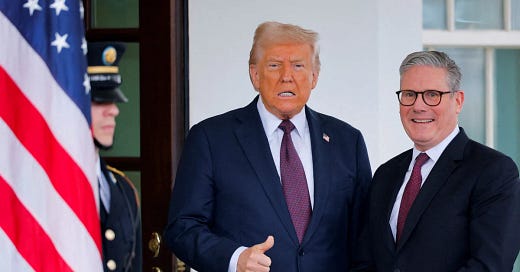Goldman Sachs’ Chief economist Jan Hatzius just released the Bank’s assessment of Trump’s UK announcement.
SUMMARY
The US-UK deal leaves the 10% baseline tariff intact for most partners, but shows flexibility on sector-specific tariffs. Trump’s comments suggest possible easing with China but renewed risk of targeted tariff hikes elsewhere.
1. UK Deal: Limited Adjustments Within Baseline Structure
Trump announced a preliminary trade deal with the UK. It maintains the US 10% baseline tariff but rolls back specific tariffs on autos and steel/aluminum. It may lay groundwork for favorable pharmaceutical treatment. UK gains include reduced tariffs on US beef and ethanol and exemption of aerospace parts from US tariffs. Net effect on US effective tariff rate estimated below 0.1 percentage points.
2. China: Tone Shifts, Retaliatory Tariff Removal Expected
Trump adopted a more conciliatory stance on US-China talks. Quoted as saying, “It doesn’t matter who made the first call,” he emphasized China’s willingness to make a deal. He projected progress over the coming weekend. GS continues to expect removal of reciprocal tariffs soon, with remaining hikes of 54pp (US) and 34pp (China) still in place.
3. Country-Specific Tariff Risk Resurfaces
Despite de-escalation signals, Trump again floated the idea of applying renewed country-specific tariffs. Citing trade imbalances, he indicated possible rates of “25%, 30%, 50%, or 10%.” While “Liberation Day” tariffs are not expected post-90-day pause, risk has increased that select partners will face bespoke tariff rates in the near term.
Continues below




